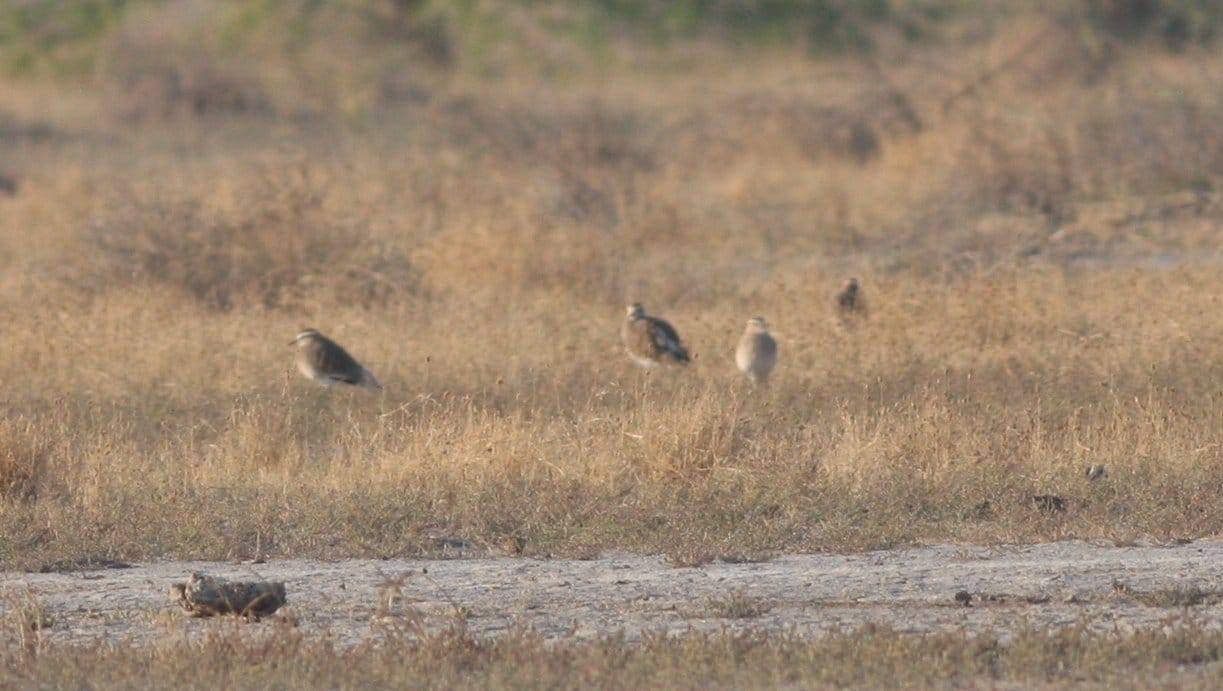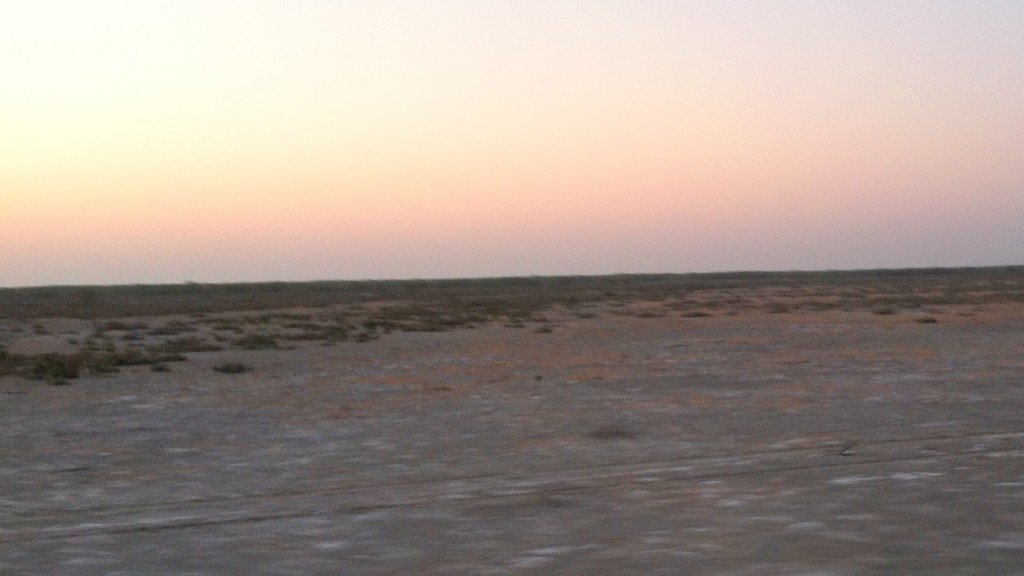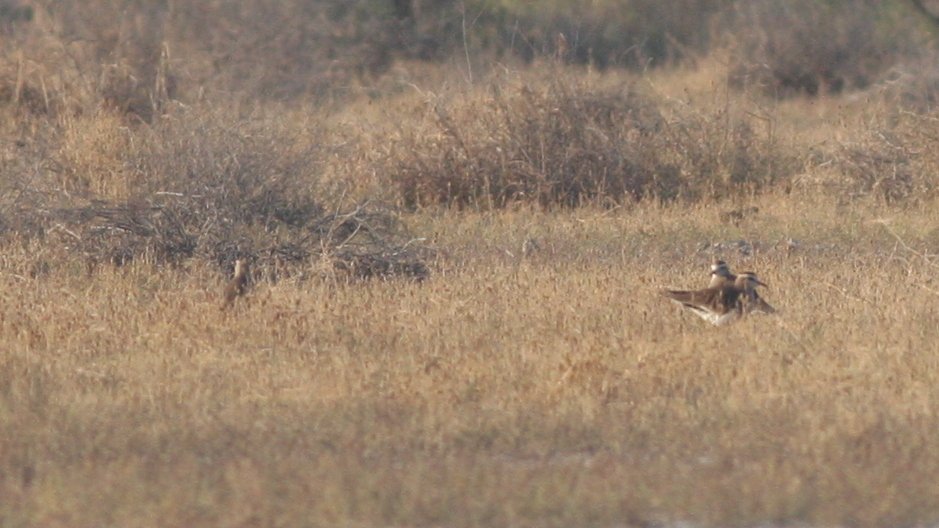
In India, everything takes about three times longer than you expect it to. On the first full day we had in Kutch, the largest and northernmost district of the state of Gujarat and where this year’s Global Bird Watching Conference was being held, the plan was to load the entire 300 person strong conference into 8 buses and travel over the desert on questionable roads to Chhari Lake.
We managed to get everybody out and onto the transportation only about 45 minutes behind schedule, and as the sun rose over the regions famed White Desert, we were on our way southward.
Road birding along India’s main roads is surprisingly productive, but here, where there are no power lines or fences and even the barest impression of a road, there was little to see. Besides, to stop and explore meant that all eight buses in our caravan, along with a handful of support vehicles, would need to stop, unload, direct people towards whatever it was we were looking for, and then reload again, a procedure akin to setting up and taking down a traveling production of The Contrabulous Fabtraption of Professor Horatio Hufnagel. In short, it had to be something really good to get this wagon train to stop.
I’m not sure who first put out the alarm. I had intended to get on the “birder bus”, but instead ended up on the one about sixth in line. But there was no joking around when someone in the front of my bus picked up on the stoppage, put glass to eye and yelled out “Sociable Plover!”
And there they were, 12 Sociable Lapwings (I guess I can forgive the poor guy in front for forgetting the updated name in the excitement) tottering around in the short grass ahead of us. 300 people got off the bus. 300 people lined up behind scopes. About 70 realized the significance of the moment and exchanged high fives. This was one of the rarest birds in the world, or at least it was thought to be until relatively recently. It was a bird not on many people’s radar. Certainly not mine. And here they were, nice as you please.
It wasn’t that long ago that Sociable Lapwing was considered a critically endangered species with a population of only around 1500. As it turns out things aren’t really that bad for it, it’s just that they tend to hang out in unpopulated areas. They nest on the vast central plains of Asia and winter in inhospitable places like Iraq and Pakistan, and rarely visited places like the White Desert of Kutch in Gujarat. Large congregations of wintering birds have pushed the estimated population up towards 15,000 or so. The current outlook is not nearly as critical as believed before, but the species is still declining and no one is exactly sure why. In any case, it goes on the short list of the most special birds I’ve come across.
People often ask me when they find out I’m a birder, what is the rarest bird I’ve ever seen. I never know quite how to answer that because “rare” is used in several ways among birders. I’ve seen a handful of North Carolina records that have never been duplicated, and I’ve seen a couple North American vagrants that are rare for their place and time and few range restricted species in Central America and the Galapagos. But, prior to this, I’d never knowingly seen a species that was globally threatened.
Maybe that’s not something to be proud of – I know birders with extinct species on their life lists that regard that fact with a sort of grim pride – but at the very least, I have an answer when someone asks that question. And it made that long trip a much more memorable one.















For me at a guess I’d suggest the New Zealand Storm-petrel, critically endangered and numbering not more than a hundred. Thought extinct for over a hundred years!
Thinking about the rarest bird you’ve seen is fun. I’d say Horned Guan (hate to rub that in, Nate) but I think the Chinese Egret I saw in Singapore in December may be rarer.
@Mike – Bah! That Horned Guan continues to vex me!
Thinking more about this, I think Sociable Lapwing may be the second rarest bird I’ve ever seen. I forgot about Galapagos Penguin, of which there are only around 1000 pairs apparently.
Kirtland’s warbler for me. Saw five of them on territory singing last May!
Sociable Lapwing is so 2009.
For me, it’s the Cerulean Paradise-flycatcher I saw in August. Sadly, there are probably fewer than thirty of these exquisite birds left on the tiny island of Sangihe.
Harpy Eagle for me 😀
Statistically, the rarest bird I’ve seen is the Lava Gull, also seen in the Galapagos. According to BirdLife International, 900-1,200 individuals in the world, and that may be an overestimate. But, the most fun rare bird I’ve seen is the Maroon-chested Ground-Dove, which showed up at Savegre Mountain Lodge, Costa Rica on my visit in 2010: http://www.flickr.com/photos/queensgirl/5291688453/ Like the Sociable Lapwing, this bird is not as vulnerable as formerly believed, it just is not seen a lot. It’s main diet is bamboo, so it appears and disappears based on the status of the bamboo of the montane forest. What was so exciting about our sighting, was that the bird was not eating bamboo. It made the CR ornithological association web site.
I’d have to go with the Piping Plovers (adults + baby fuzzballs — adorbs!) skittering along the beach at the Parker River NWR on Plum Island in Massachusetts.
Two fine New Zealand’s Black Stilts, found all by myself with no tips or knowledge on areas, in April 2001. Back in 2001, just 80 birds were estimated in the wild. There are not much more today.
I guess it’d be the Aransas Whooping Cranes for me in terms of population.